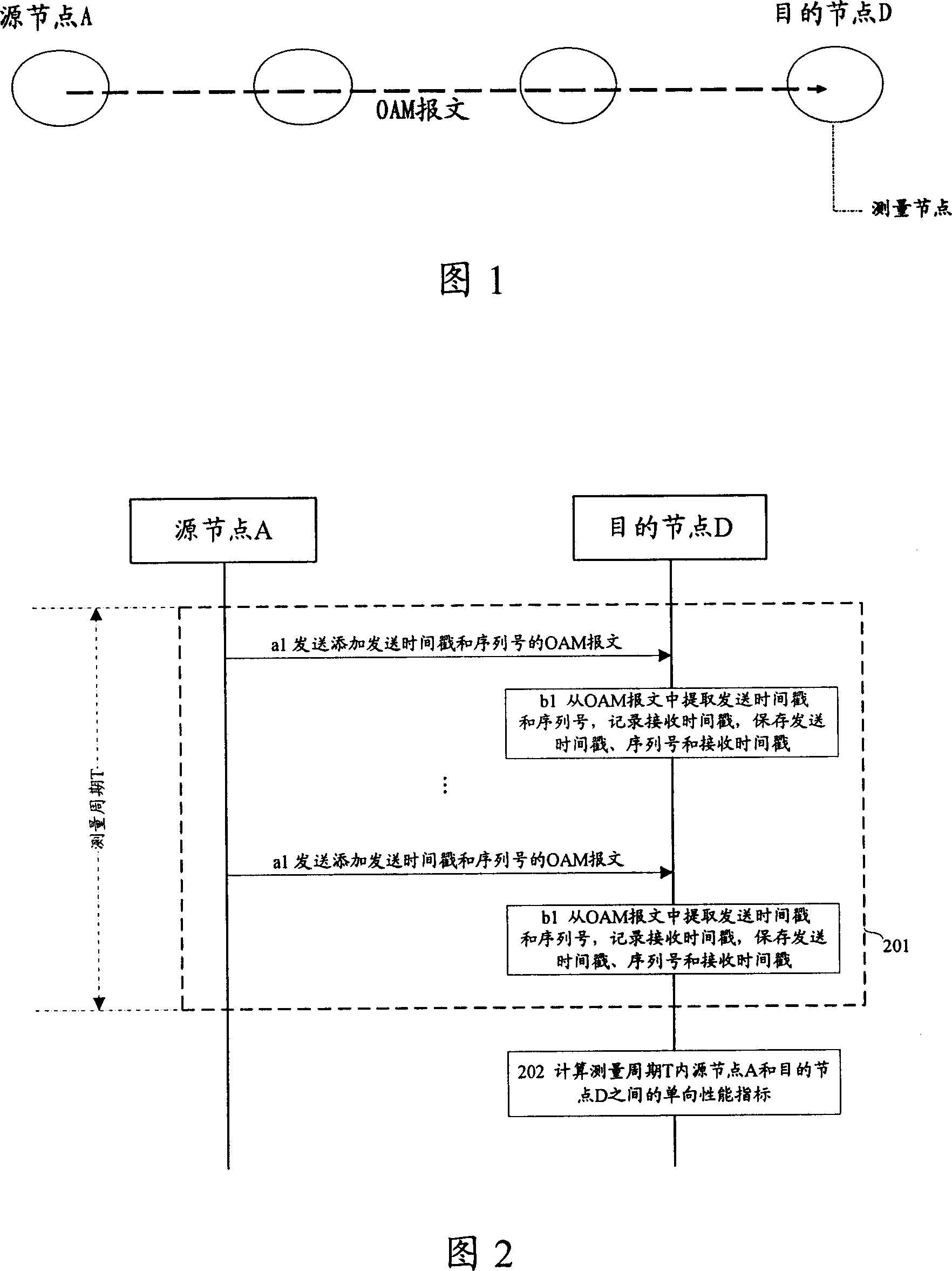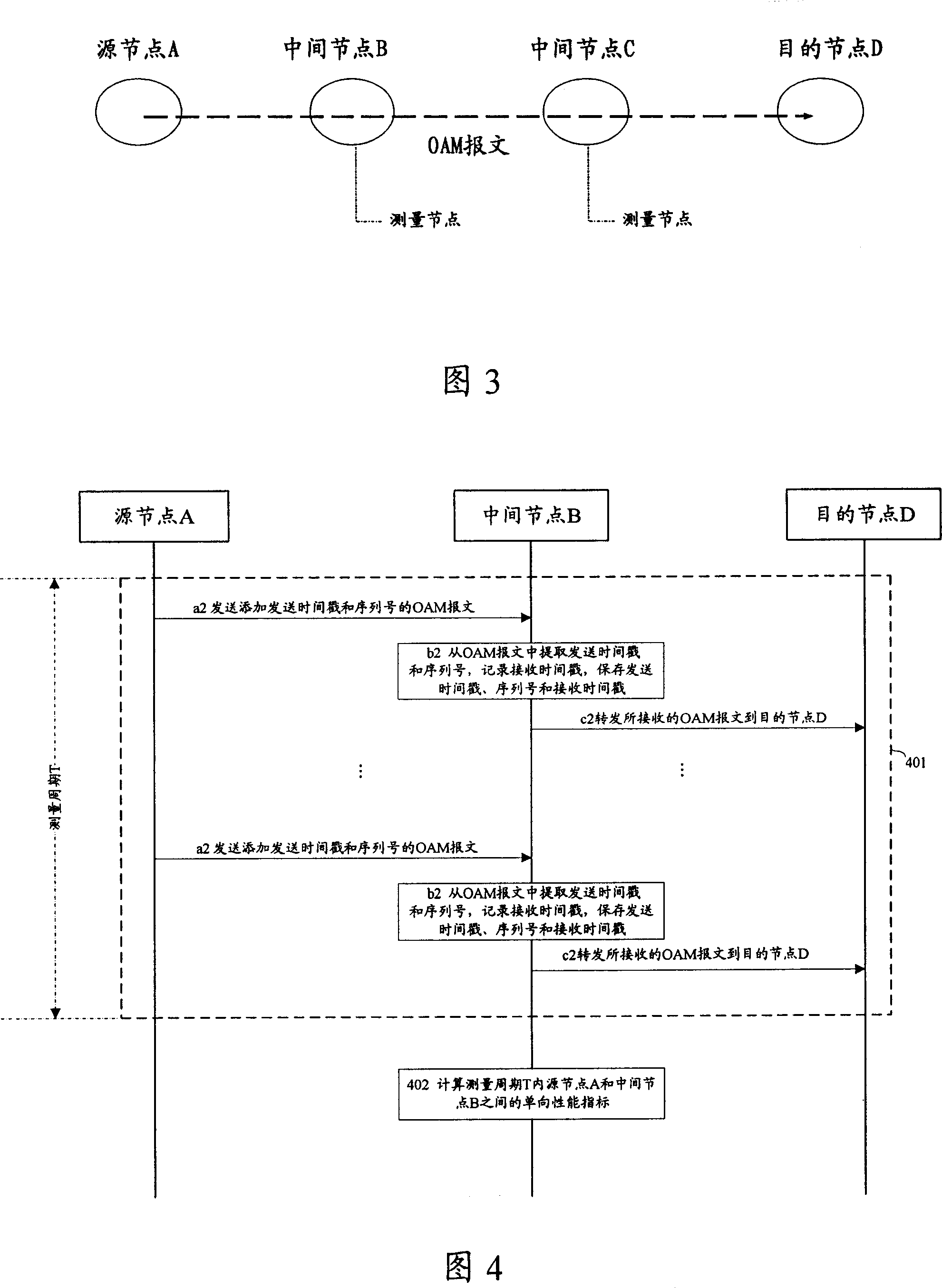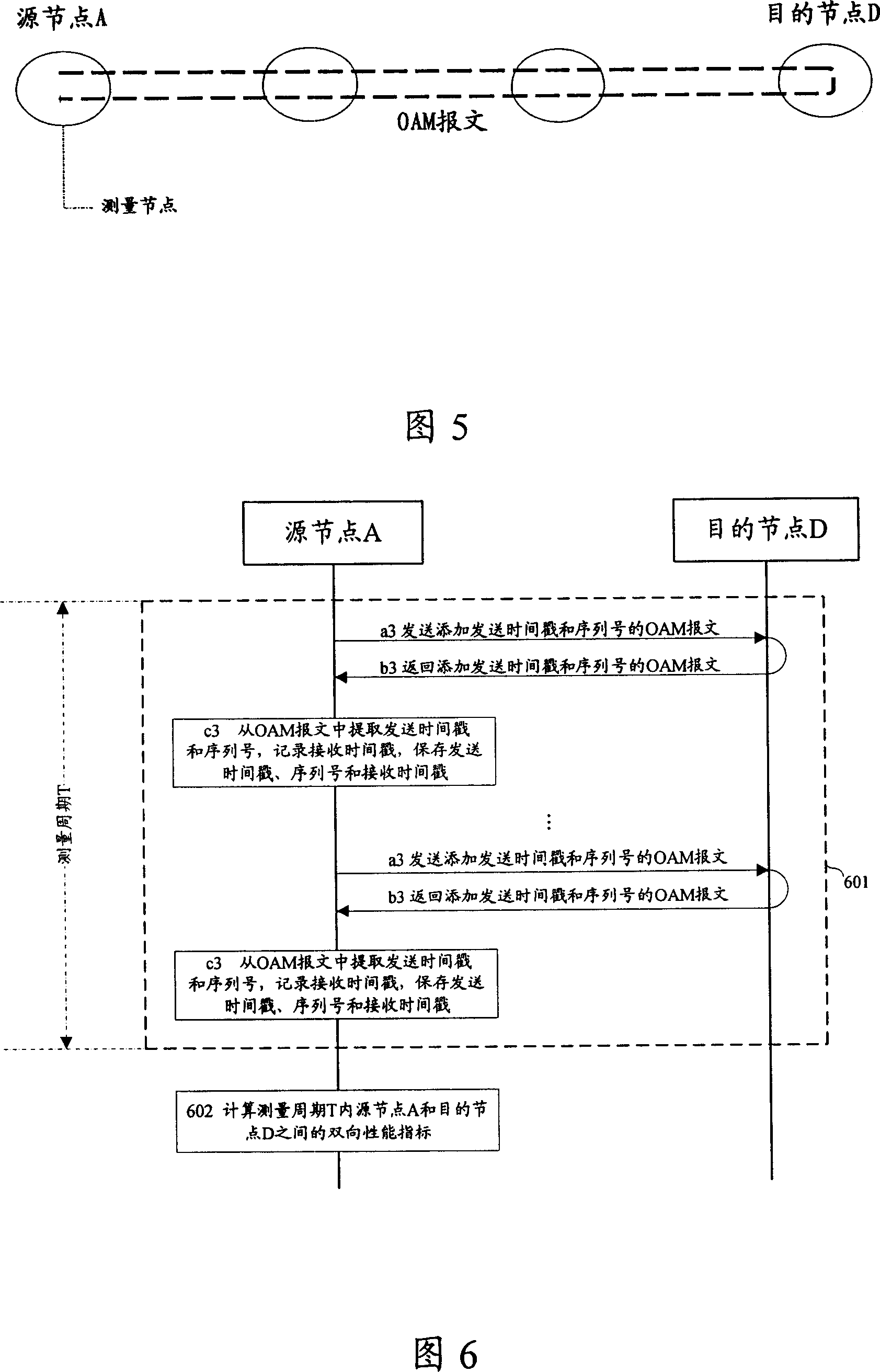Network for formance measuring method
A measurement method and technology for network performance, applied in data exchange networks, digital transmission systems, electrical components, etc., can solve problems affecting network traffic characteristics, performance index deviations, affecting network performance index measurement results, etc., to improve accuracy. Effect
- Summary
- Abstract
- Description
- Claims
- Application Information
AI Technical Summary
Problems solved by technology
Method used
Image
Examples
Example Embodiment
[0041] Embodiment 1: This embodiment is for a one-way performance measurement situation. Figure 1 is a schematic diagram of the network performance measurement method of Embodiment 1 of the present invention. The source node A sends an OAM message to the destination node D, and the destination node D performs the measurement as a measurement node. Network performance measurement based on OAM messages to obtain one-way performance indicators between the source node A and the destination node D. Commonly, the clock synchronization between the source node A and the measurement node D is maintained.
[0042] Fig. 2 is a flowchart of the network performance measurement method according to the first embodiment of the present invention. Before the measurement starts, the destination node D presets its own measurement period T. The network performance measurement method according to the first embodiment of the present invention includes:
[0043] Step 201: The source node A and the destin...
Example Embodiment
[0055] Embodiment 2: This embodiment is for a one-way performance measurement situation. FIG. 3 is a schematic diagram of a network performance measurement method of Embodiment 2 of the present invention. The OAM message sent by the source node A to the destination node D passes through the intermediate node B and the intermediate node C is forwarded to destination node D. Intermediate node B is used as a measuring node to perform network performance measurement based on OAM messages to obtain one-way performance indicators between source node A and intermediate node B. Commonly, source node A and measurement node B Keep clock synchronization between.
[0056] Fig. 4 is a flowchart of the network performance measurement method of the second embodiment of the present invention. Before the measurement starts, the intermediate node B presets its own measurement period T. The network performance measurement method of the second embodiment of the present invention includes:
[0057] St...
Example Embodiment
[0071] Embodiment 3: This embodiment is aimed at two-way performance measurement. Figure 5 is a schematic diagram of the network performance measurement method of Embodiment 3 of the present invention. The source node A sends an OAM message to the destination node D, and the destination node D will receive the data from The OAM message of the source node A is returned to the source node A, and the source node A is used as a measuring node to perform network performance measurement based on the OAM message to obtain the two-way performance index between the source node A and the destination node D.
[0072] Fig. 6 is a flowchart of the network performance measurement method of the third embodiment of the present invention. Before the measurement starts, the destination node A presets its own measurement period T. The network performance measurement method of the third embodiment of the present invention includes:
[0073] Step 601: The source node A and the destination node D conti...
PUM
 Login to view more
Login to view more Abstract
Description
Claims
Application Information
 Login to view more
Login to view more - R&D Engineer
- R&D Manager
- IP Professional
- Industry Leading Data Capabilities
- Powerful AI technology
- Patent DNA Extraction
Browse by: Latest US Patents, China's latest patents, Technical Efficacy Thesaurus, Application Domain, Technology Topic.
© 2024 PatSnap. All rights reserved.Legal|Privacy policy|Modern Slavery Act Transparency Statement|Sitemap



